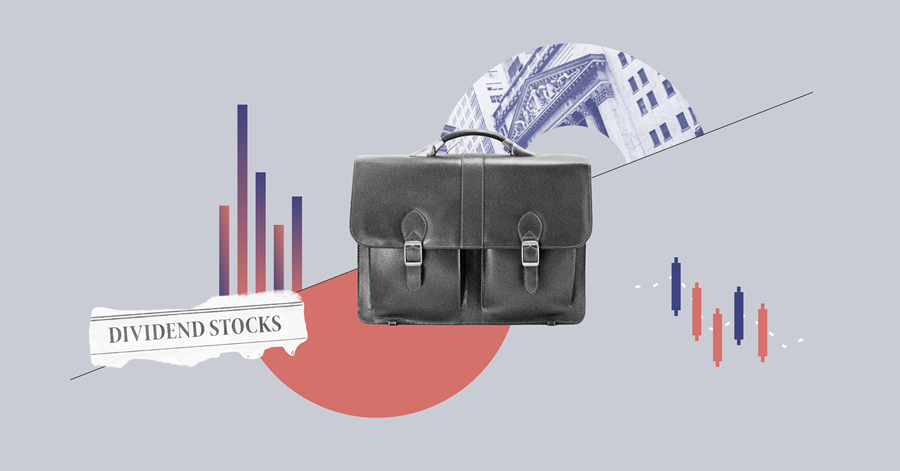Holly Black: Welcome to the Morningstar series, "Ask the Expert." I'm Holly Black. With me today is Russ Mould. He's Investment Director at AJ Bell.
Hello.
Russ Mould: Hello, Holly.
Black: So, we're here to talk about dividends today.
Mould: Yes.
Black: There's been a lot of company results in the last few weeks and it feels like we've seen a lot of dividend cuts. Why is that?
Mould: We've seen some high profile ones, Marks & Spencer, Vodafone, Centrica, or Royal Mail are probably the big four, and they're all very high-yielding stocks initially. And I think one of the reasons why they've cut the dividends is the yield was extremely high and the cost of maintaining that dividend to the company was simply too high.
Black: So, is that a bad thing if I own these shares, or I own a fund that owns these shares?
Mould: Generally, yes, because what you tend to find is not only do you lose the income, but the share price collapses as well. Now, in some of those cases, the market isn't daft. It could kind of look at those yields and think this is just too good to be true. You don't find free money in the street. And so, the share prices have already begun to price in those dividend cuts. And that's why Centrica, I think, just took the plunge because it wasn't getting any credit for paying an unchanged dividend anyway.
So, frankly, as a CEO, why wouldn't you. But what you find is, yeah, you're right, the share price goes down, and you lose the income. So, it can be very painful. That said, once the cut has been done, Vodafone shares stabilised and have actually now started to rise. So, if you look at what drives share prices over the long term, it's not stocks with a fat yield that do well, that never changes; it's stocks that consistently grow their dividend over time. And so, once you set a suitably lower base, there is a chance you can begin that growth pattern again, and that may start to drag your shares higher.
Black: But yeah, it's sort of a badge of honour, isn't it when a company grows its dividend year-on-year…
Mould: Yes, because they're very rare.
Black: So, cutting it must be a big decision.
Mould: Well, it's very painful because A, the chief executive probably owns some shares, so it hits them in the pocket; B, there's a chance they get the sack from disgruntled shareholders. So, they will definitely not take this decision lightly at all. And if you look at Vodafone, M&S and Centrica, they've all sort of slightly cloaked it behind, actually, we just need to really invest in the core business, Vodafone in 5G, M&S in Ocado, Centrica in improving its customer service in the Hive and all these remote services it's looking to provide. So, it's a very sensible thing to do. But what it means is, they couldn't pay the fat dividend and invest in their core business at the same time. They've done the right thing. Focus on the core business, because if that goes down the pan, then your dividends are going to go with anyway, at some stage. It's definitely the right thing to have done.
Black: So, if you see a share, and it's yielding 12%, 15%, that's…
Mould: Sorry, I shouldn't laugh.
Black: …that's a danger sign.
Mould: Well, it is. Because if you think about it, what are you getting in the bank from the best possible cash ISA right now? Couple of percent? If you lock it, and you're locking up your money for quite a long time to get that, right? The UK 10-year gilt yield, the bond yield on 10-year government loans is known as the risk-free rate, okay? Because the government is always – whenever you've loaned money to the UK Government, it's paid it back since 1672. So, our record isn't bad. But that is currently offering you 0.65%, okay? So, if something's offering you 12% and the risk-free rate is 0.65%, how much risk are you taking to get the 12%, A, the income could be too high, but B, just think of the share price, the capital risk, and that's what Royal Mail, Vodafone, M&S and Centrica, have told you, because their share prices all collapsed. So, the risk that you're taking will be very, very – I'm not saying don't do it. But I'm saying be very aware of the risk that you will be taking.
Black: So, one measure that's quite good to look at to tell how safe that dividend is, is dividend cover, isn't it?
Mould: Yeah, quick, cheap, easy, need some refining, but very crudely earnings per share forecast divided by dividend per share forecast. In a perfect world, you want it to be over 2 times because that gives the company wiggle room if something unexpected happens; recession, profit warning, something goes – acts of God, things can happen. If you want to be a bit more scientific about it, really look at that over, say, a 5 or a 10-year average, particularly with cyclical companies whose profits go up and down in the economic cycle. Look at what the average dividend cover would be or the average earnings per share figure would be and that will give you again a bit more reassurance. Companies, they cut some slack for areas where may be the dividend is – the demand is more certain. But where that is right now with utilities under regulatory pressure, tobacco stocks under the regulatory pressure. You can probably cut some slack for beverage companies, food companies, people like to eat, drink. But overall, 2 times or better preferably over a cycle will give you more comfort.
Black: Well, thank you so much for your time.
Mould: Not at all.
Black: Thanks for joining us.





























